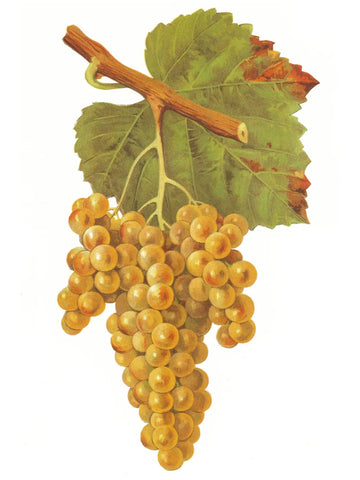NASCETTA

Sprout: February
Flowering: June
Start of ripening/color change: August
Ripening: mid-September
Harvest: September
Pruning system: Guyot or mixed system with one fruiting cane with 10-12 buds
Nascetta, Anascetta or Nas-cëtta, are the names that have been used over the centuries to describe this grape variety. The Nascetta grape originates from the area around Alba and is grown in the hills between Barolo and Novello. As early as 1877, people were talking about "very delicate grapes and excellent wine". At the time, this grape was mainly used for blending and as table wine. Over the years, however, this variety has disappeared from view and we are fortunate that the vines have been saved from extinction. In the late 1980s and early 1990s, the Nascetta was revived from a number of vines growing between the Nebbiolo in the municipality of Novello, where the Nascetta was reborn. It is Novello that can boast of a number of great Nascetta wines.
Only recently have more winemakers become interested in Nascetta. The reason for this is that, apart from Arneis and with a few exceptions, there are no real great white wines within the Langhe, traditionally of course less important in this area. In 2002, Nascetta became part of the Langhe DOC and in 2010 the Langhe "Nas-cëtta" type of the municipality of Novello DOC was separately recognized. Obtained exclusively from the Nascetta grape variety of the municipality of Novello and with a yield of no more than 90 qt.The chalky clayey marls of the Langhe give the Nascetta wines structure, acidity, complexity and minerality. The Nascetta has excellent oenological characteristics: recent analyzes of the terpenes of the grapes classify the Nascetta as a semi-aromatic grape variety, with a good content of aromatic substances. The aromas of the wine are mainly formed by fermentation, just like with Sauvignon.
The Nascetta wine has a straw yellow color, clear and brilliant. The nose gives hints of white flowers, citrus and fruity aromas. On the palate it is a wine with good structure and remarkable freshness, enveloping, savory, with a slightly bitter aftertaste. The good acidity and structure give the wine a long life, making it suitable for both steel and wood vinification. It goes well with starters based on shellfish, raw fish and vegetables, but also with starters based on fish and delicate dishes of white meat or with fresh cheeses.